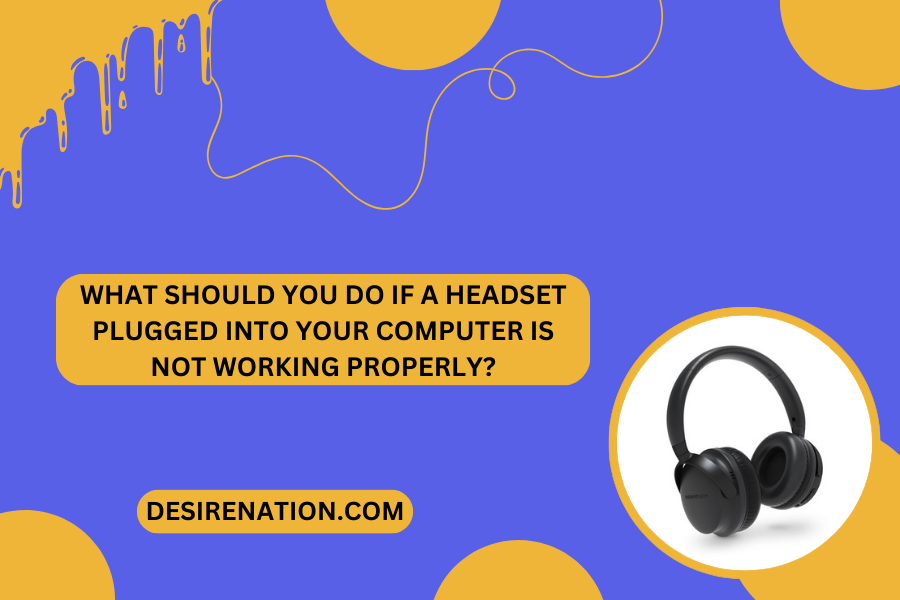Headsets are essential accessories for many computer users, whether you use them for work, gaming, or leisure activities like watching movies or listening to music. However, encountering issues with your headset’s functionality can be frustrating. If you’ve plugged your headset into your computer and it’s not working correctly, don’t worry. In this article, we’ll guide you through a series of troubleshooting steps to help you identify and resolve the issue, ensuring your headset works as expected.
Step 1: Check the Physical Connections
Before delving into software and settings, start with the basics:
- Ensure that your headset is securely plugged into the correct audio and microphone jacks on your computer. Sometimes, a loose connection can cause problems.
- If you’re using a USB headset, ensure that the USB cable is properly connected to a functional USB port.
- If your headset has a volume control, check that it’s not set to mute or at an extremely low volume.
Step 2: Test the Headset on Another Device
To determine whether the issue lies with your computer or the headset itself, try using your headset on another device such as a smartphone, tablet, or another computer. If the headset works correctly on another device, the problem may be with your computer’s settings or hardware.
Step 3: Update or Reinstall Audio Drivers
Outdated or corrupted audio drivers can lead to headset issues. To address this:
- Access the Device Manager on your computer (you can search for it in the Windows search bar).
- Expand the “Sound, video, and game controllers” section.
- Right-click on your audio device and select “Update driver.” Follow the on-screen prompts to update the driver software.
- If updating the driver doesn’t resolve the issue, you can also try uninstalling the audio driver and then restarting your computer. Windows will reinstall the driver automatically upon reboot.
Step 4: Check Audio Settings
Ensure your computer’s audio settings are correctly configured:
- Right-click on the speaker icon in the taskbar (Windows) or access the Sound settings in your system preferences (macOS).
- Confirm that the correct audio output device (your headset) and microphone are selected as the default devices.
Step 5: Test Different Applications
Sometimes, the issue may be specific to certain applications. Try using your headset with various applications, such as Skype, Zoom, a media player, or a video game, to see if the problem persists across all of them.
Step 6: Run Troubleshooters (Windows)
Windows offers built-in troubleshooters that can help identify and fix audio-related issues:
- Type “Troubleshoot” in the Windows search bar and select “Troubleshoot settings.”
- Under “Get up and running,” click on “Playing Audio” and follow the prompts to run the troubleshooter.
- Windows will attempt to identify and resolve audio problems automatically.
Step 7: Check for Software Conflicts
Sometimes, third-party software or applications can interfere with your headset’s functionality. Try closing all unnecessary background applications and test your headset again.
Step 8: Restart Your Computer
In some cases, a simple restart can resolve various software-related issues. Restart your computer and test your headset once it boots up.
Step 9: Seek Professional Help
If you’ve tried all the steps above and your headset is still not working properly, it may be a hardware issue with the headset itself. In such cases, consider contacting the manufacturer’s customer support for further assistance or repair options.
Conclusion
A malfunctioning headset can disrupt your work or gaming experience, but by following these troubleshooting steps, you can often identify and resolve the issue without much hassle. Remember to check physical connections, update drivers, adjust audio settings, and rule out software conflicts before seeking professional assistance. With a bit of patience and some technical know-how, you can get your headset back to working order and enjoy uninterrupted audio experiences on your computer.
You Might Also Like These:












